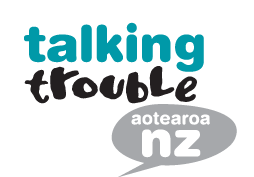
Talking Mats are now being provided in New Zealand by Talking Trouble Aotearoa New Zealand
For more information, please visit their website.
Talking Mats provides a visual framework to help people express their views using a selection of communication symbols that cover a variety of topics.
Talking Mats is used by clinical practitioners, social workers, education staff, advocates, carers and support workers in a wide range of health, social care, residential and education settings. Talking Mats products are available as both an original low-tech and digital resource.
The innovative, award-winning Talking Mats communication symbols tool is based on extensive research and designed by Speech and Language Therapists. It uses unique, specially designed picture communication symbols that are attractive to all ages and communication abilities and is used by clinical practitioners, carers and support workers in a wide range of health, social work, residential and education settings.
Whether used for consulting children and young people, used as a stroke communication resource, or used to overcome communication difficulties for people with learning disability or dementia, these communication symbols have proved highly effective.
What is a Talking Mat?
A Talking Mat is a visual communication framework which supports people with communication difficulties to express their feelings and views. Talking Mats can be carried out physically or in a digital space, for example a tablet, laptop or computer for which we have created one of the best apps for communication disability.

Above, you can see an example of a (digital) Talking Mat. It is made up of three sets of picture communication symbols – topic, options and a visual scale – and a space on which to display them.
Once the topic has been chosen, the participant is given the options one at a time and asked to think about each one, placing it on the Talking Mat to indicate how they feel about it.
How Talking Mats Works
Talking Mats is an interactive resource that uses three sets of picture communication symbols – topics, options and a visual scale – and a space on which to display them. This can either be a physical, textured mat, or a digital space, for example a tablet, smart board or computer screen for which we have created one of the best apps for communication disability. Topics: whatever you want to talk about, e.g., pictures symbolising “what do you want to do during the day”, “where you want to live”, “who do you want to spend time with”, etc.
Options: relating specifically to each topic. For example: “What do you feel about going for a walk? Or “living at home?”
Top Scale: this allows participants to indicate their general feelings about each topic and option. The meaning of the visual top scale can be adapted to suit the questions you are asking the person, for example, whether they are happy, unsure, or unhappy.
Once the topic is chosen, e.g. ‘activities’ or ‘people’, the participant is given the options one at a time and asked to think about what they feel about each one. They can then place the symbol under the appropriate visual scale symbol to indicate what they feel.
Talking Mats is used by clinical practitioners, carers and support workers in a wide range of health, social work, residential and education settings. Here are just a few ways that Talking Mats can be used:
- Help children and adults to express their preferences or feelings
- Provide a ‘thinking tool’ to enable people to explore issues and help them to structure and verbalise their thoughts.
- Help people with a learning disability to both understand what is involved in a decision and to then give their opinion.
- People who have had a stroke may have problems both understanding others and expressing themselves.
- The visual presentation of Talking Mats helps comprehension as well as providing an effective way for people to express their views.
- The structured and consistent format of Talking Mats makes it easier both for people with dementia to keep to topic and for the listener to follow the track of the conversation
- Support people with communication difficulties to express negative as well as positive views and reduce the tendency for people to acquiesce, i.e., agree with everything.
- The act of physically moving the picture symbols helps people organise their thoughts in a logical way.
Resources
Aotearoa Rangatahi
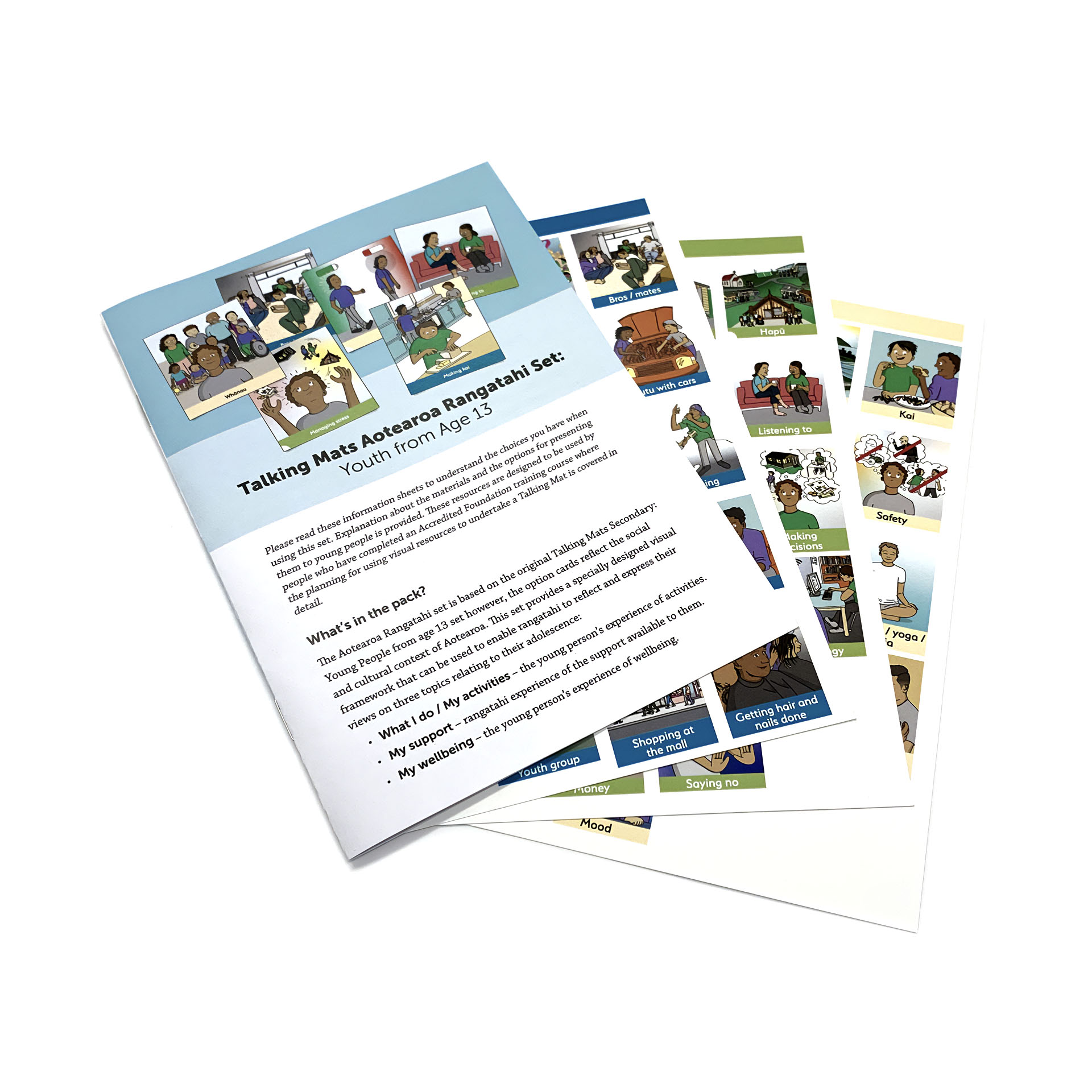
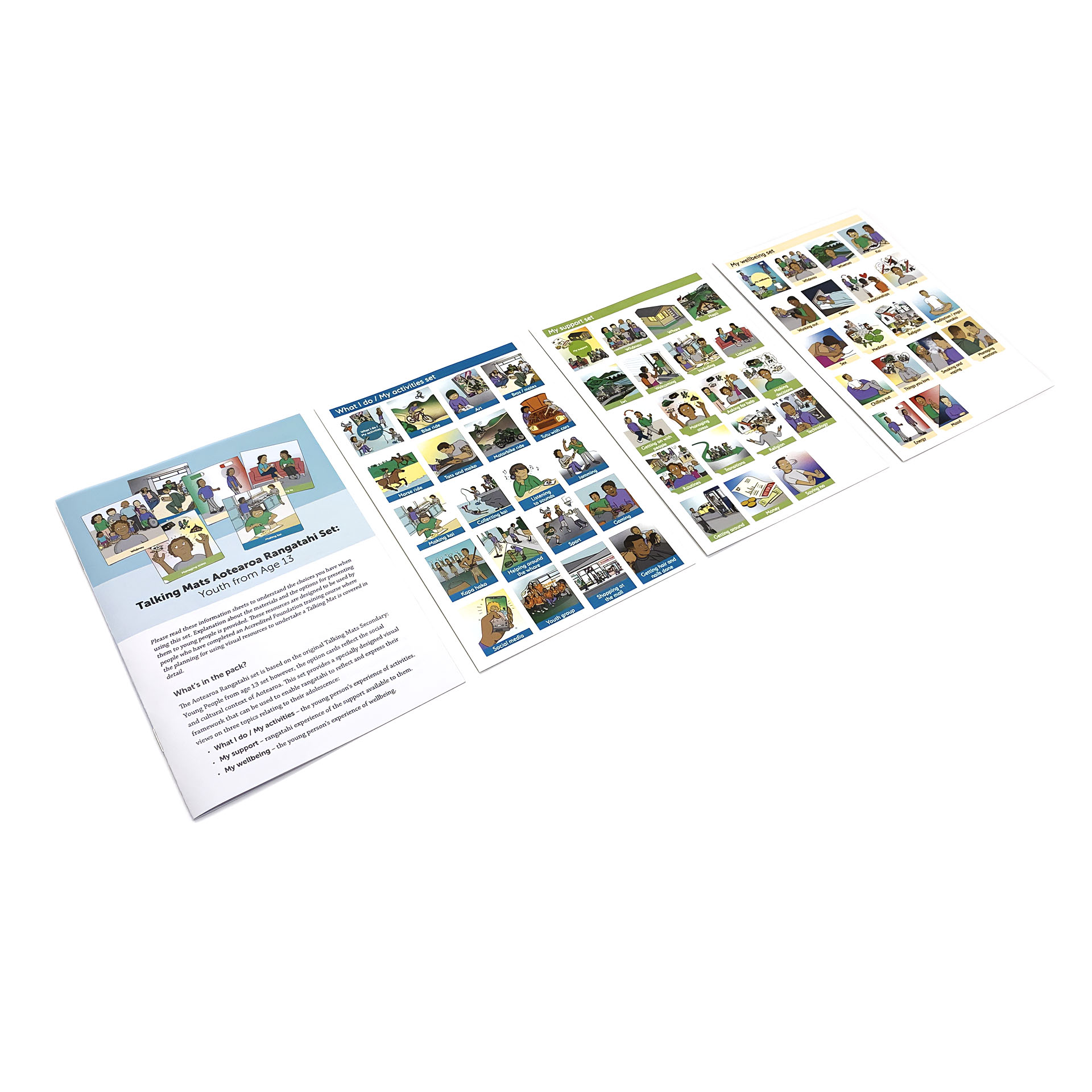

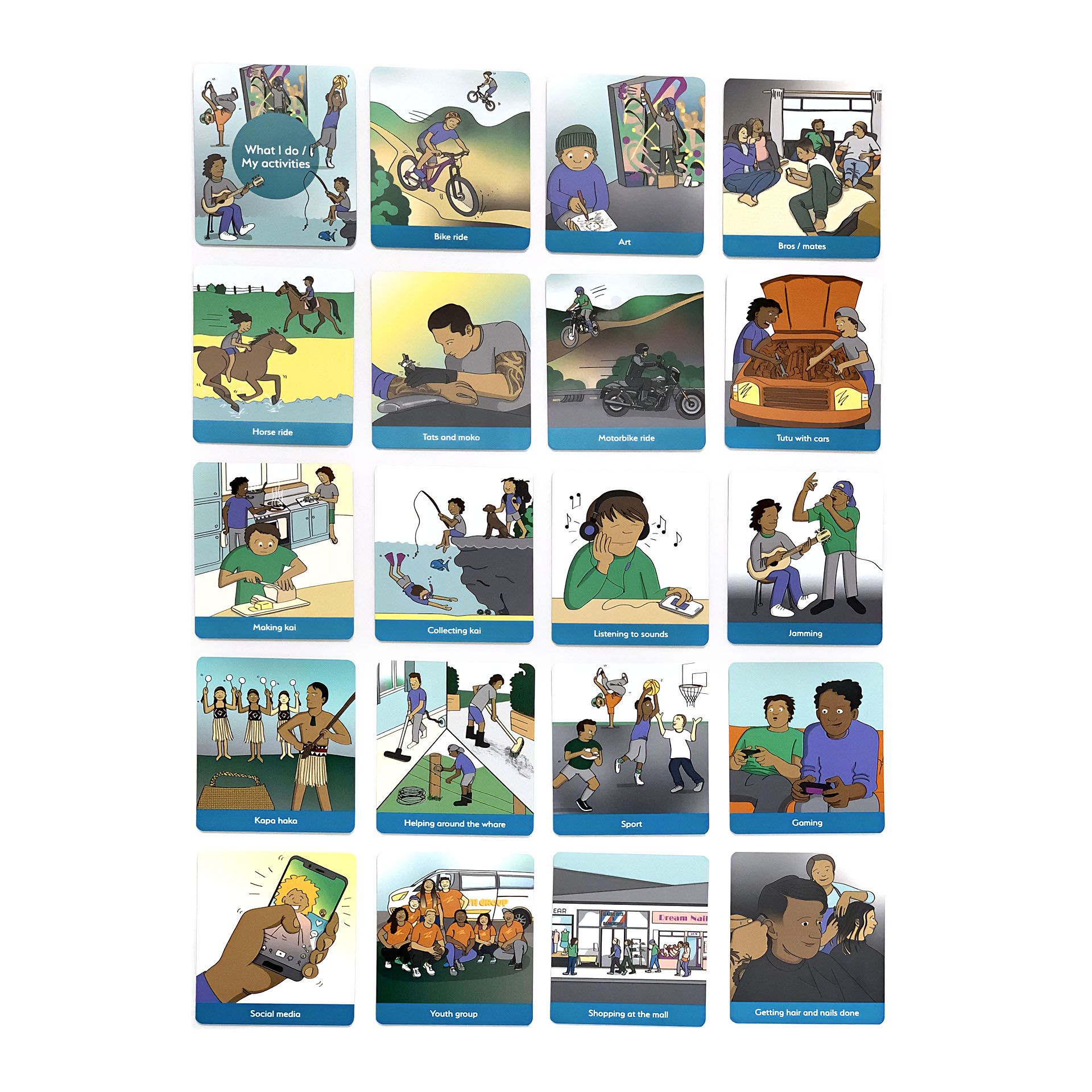
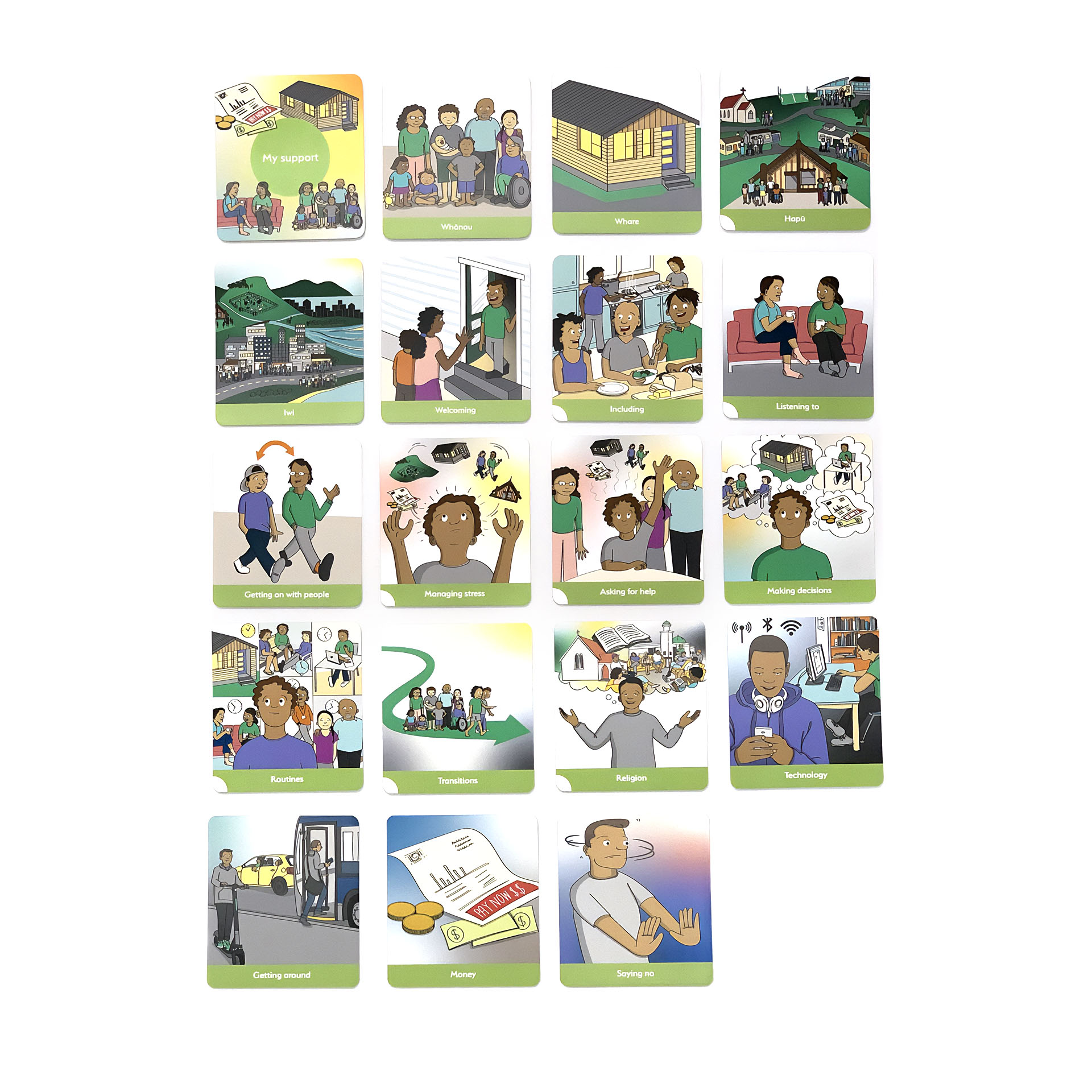
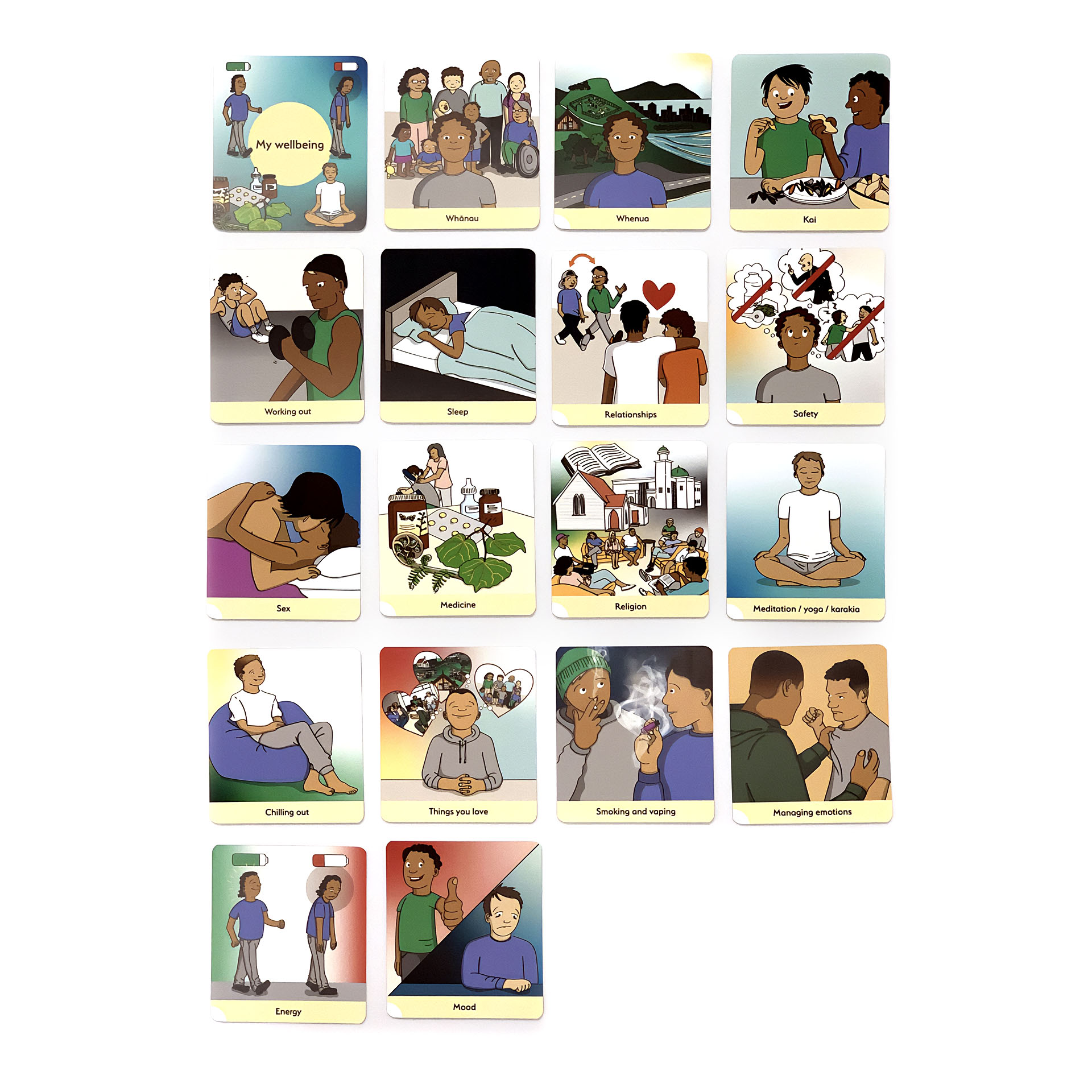

Health and Wellbeing
Communication

Expression
Producing verbal, non-verbal and contextual communication.

Understanding
Receiving verbal, non-verbal and contextual communication.

Learning and Thinking
Learning and applying knowledge.

Relationships
Interacting with people.
Looking After Yourself

Self-Care
Looking after your body

Domestic Life
Carrying out everyday actions and tasks where you live.

Work and Education
Carrying out actions and tasks relating to paid and unpaid work and education.
Health

General Health
Senses and body functions.

Mobility
Moving, transferring and using transport.

Coping
Carrying out general tasks and demands.
Leisure and Environment

Environment
Surroundings and support where you live.

Leisure Away
Leisure activities away from home.

Leisure Home
Leisure activities where you live.
Social Care
This resource set was designed particularly for individuals in care and supported living settings. It gives a helpful overview of their life, focusing on 3 topics:

Activities
Leisure activities where you live.

Where You Live
The environment and people where you live.

You
Personal well-being.
Justice
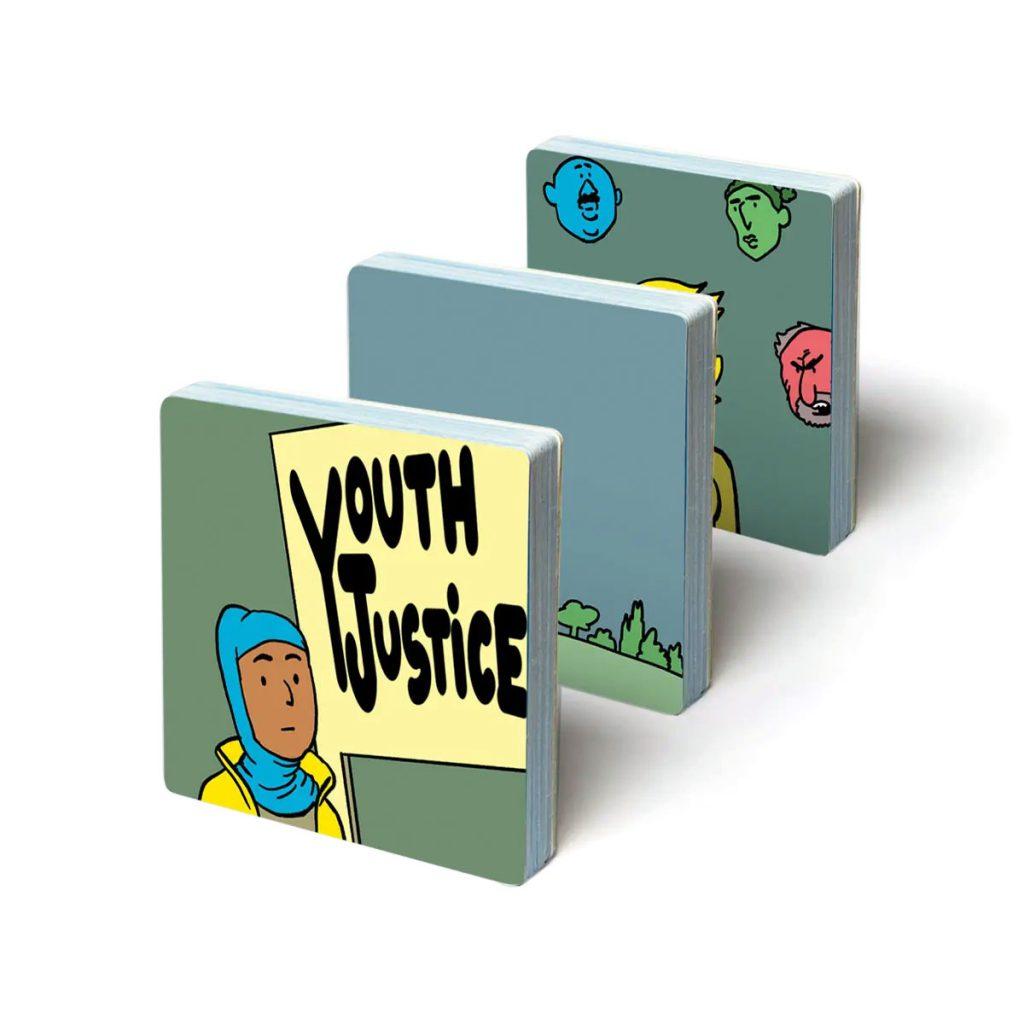
This resource was developed with Greater Manchester Youth Justice Service to help enable conversations about subjects linked to a young person’s offending. It consists of 3 topics:
Places and Spaces
This Topic supports conversations about the places and spaces where the young person feels safe, giving an understanding of wider antisocial behaviour and helping to target preventative support.
Relationships
This topic addresses the dynamics in a relationship aiming to support assessments around sexually harmful behaviour.
My Youth Justice Experience
This topic focuses on exploring the young person’s satisfaction with the service.
Careers, Work and Employment
This resource was developed through several projects in different settings including with long-term unemployed, school settings, and in career settings. Testing for the final resource was carried out with Autism East Midlands, Sutherland School, as part of their support to pupils transitioning from school.
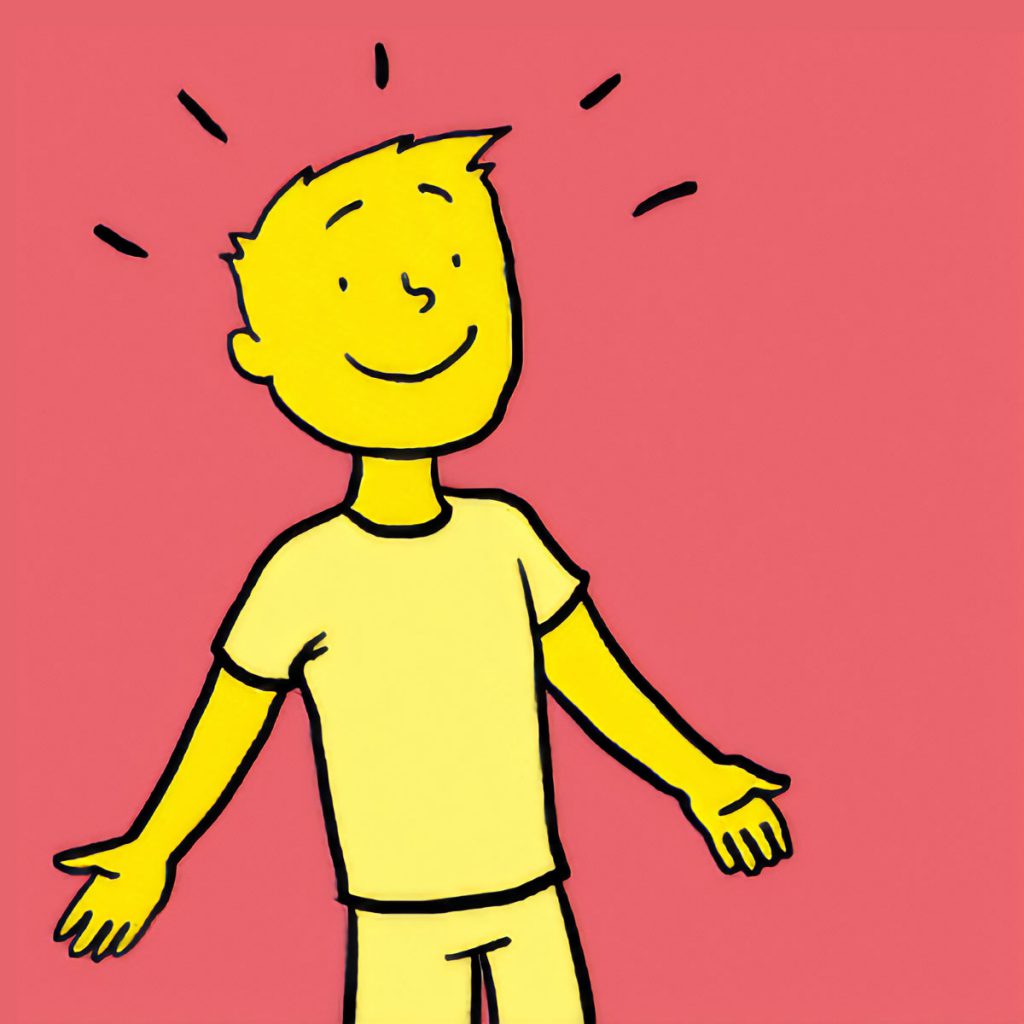
Readiness for Work
This topic helps explore the thinker’s readiness for work in terms of their health and well being and includes options such as; travelling, coping with sensory environments, support networks.

Skills
This topic allows the thinker to consider their capability to work. It deals with concrete skills such as talking on the phone and working with numbers, and more abstract abilities such as taking initiative and being enterprising.

Preferences
This topic explores how important different types of work are to a person, for example being self-employed, being part of a big company, working indoors and working outdoors. It helps the thinker see how their beliefs and values might fit in the workplace.
Funeral Planning
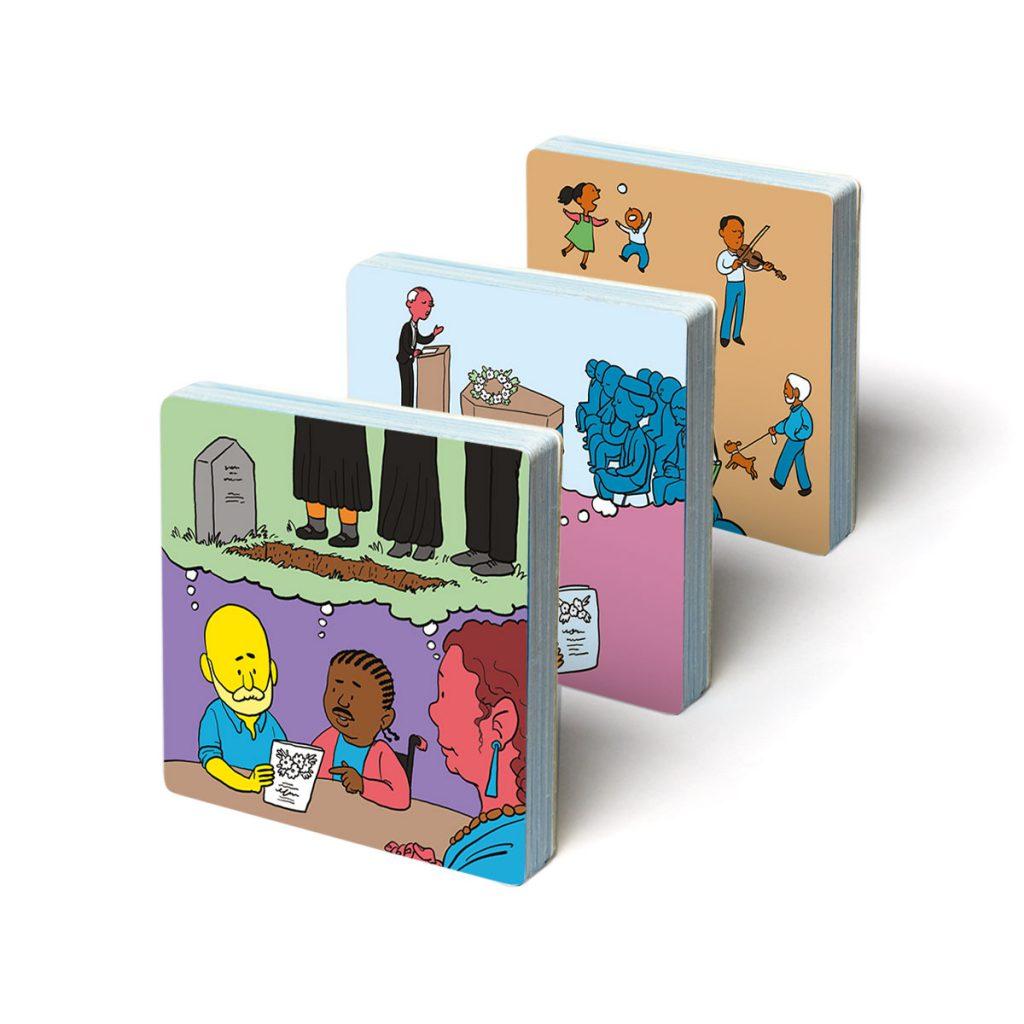
The Talking Mats Funeral Planning Resource provides a way to begin having these conversations. The application of this resource is not limited to people with communication support needs. The emotional challenges which we all face when having this difficult conversation can be significantly reduced by using Talking Mats.
Funeral Planning
Funeral Service
The Eulogy
Consulting Children & Young People
Three sets available

Early Years

Primary

Secondary
Each set are divided into three topics

About Me
With this set you can explore how the child is growing and developing, by focusing on the functions of the body, as well as skills that are emerging. You can gain an impression of how the child feels he or she is progressing physically, socially, cognitively and behaviourally.

What I Do
This set focuses on at the child’s lived experience by asking about the activities they participate in, as well as how they feel about the support they receive.

My World
The communities in which children grow up have a significant impact on the well-being of both children and families. This set supports discussion about the child’s wider world, exploring the impact of nursery or school, as well as the support system available to them.
Conversation
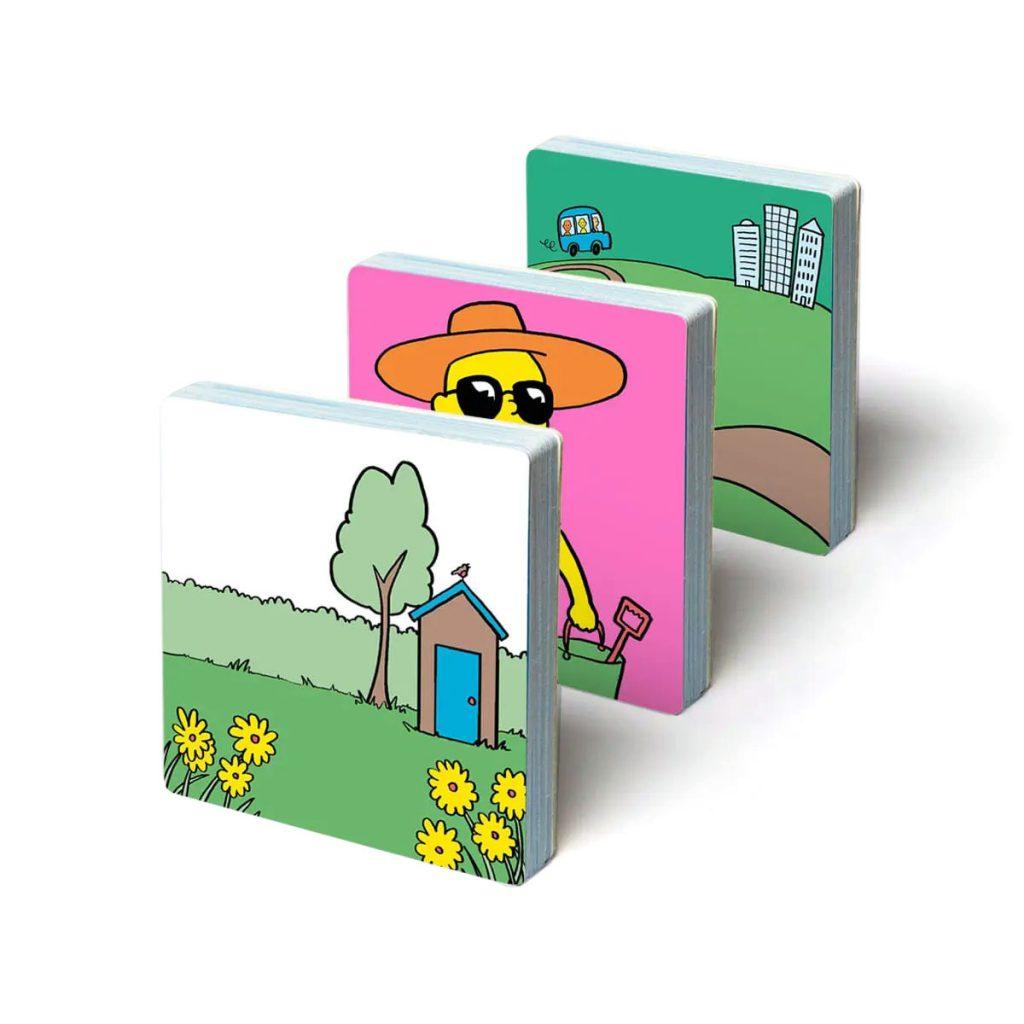
Out and About
Gardens
A resident in a Care Home chatted about what she liked and didn’t like about the Care Home gardens and made some suggestions for changes.
Holidays
A young man with a learning disability talked to his social worker about where he had gone on holiday and what he had enjoyed.
Trips Out
A group of people at a Day Centre planned where they wanted to go for their weekly outings.
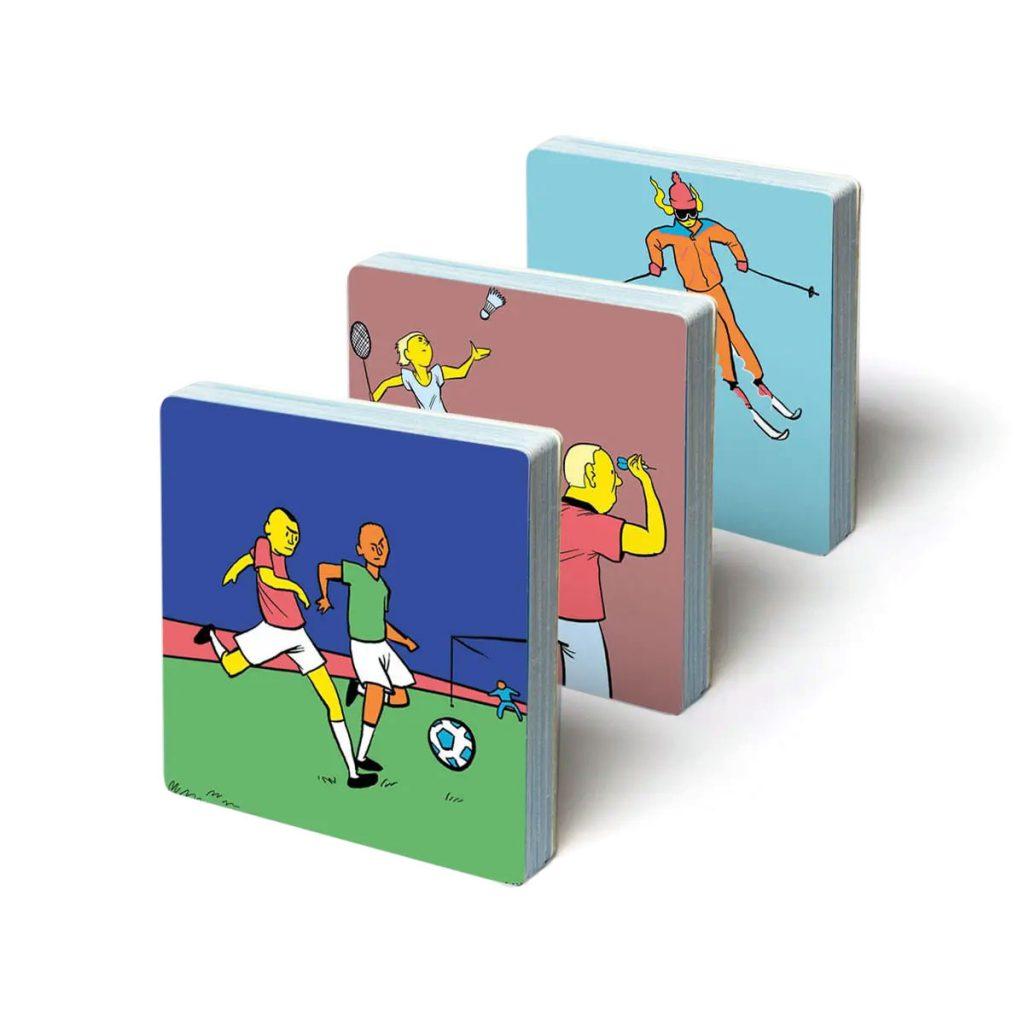
Sports
Football
A group of people with learning disability chatted about what they liked and did not like about a football game they watched on TV. This set provoked lots of lively discussion.
Indoor Sports
A woman with a stroke chatted with her friend about the sports she wanted to try at the local Sports Centre.
Outdoor Sports
A man with dementia talked about the sports he used to do when he was younger.
Advanced

Keeping Safe
Your Well-Being
Physical health, mental health, health appointments, autonomy and personal safety.
Relationships
The people in your life, managing current relationships, intimate relationships and relationships ending and / or changing.
Thoughts and Feelings
A way to explore such as mood, resilience, self-harm.

Thinking Ahead
Affairs
The extent to which personal affairs are sorted.
Care / Treatment
Consideration of future treatments, interventions and care.
Personal Values
The extent to which these are being upheld and respected.
Specialist
Eating and Drinking
This resource has been co-produced with the help of people with eating and drinking difficulties and a range of different professionals. It is designed to help people think about, discuss and make informed decisions about how to manage their eating and drinking more safely.

Meals
Types of food, where you eat and the process of eating.

Impact on Health
Person’s views on how their eating and drinking affects their health.

Things That Might Help
Person’s views on strategies that may be used to help manage eating and drinking.
Senses
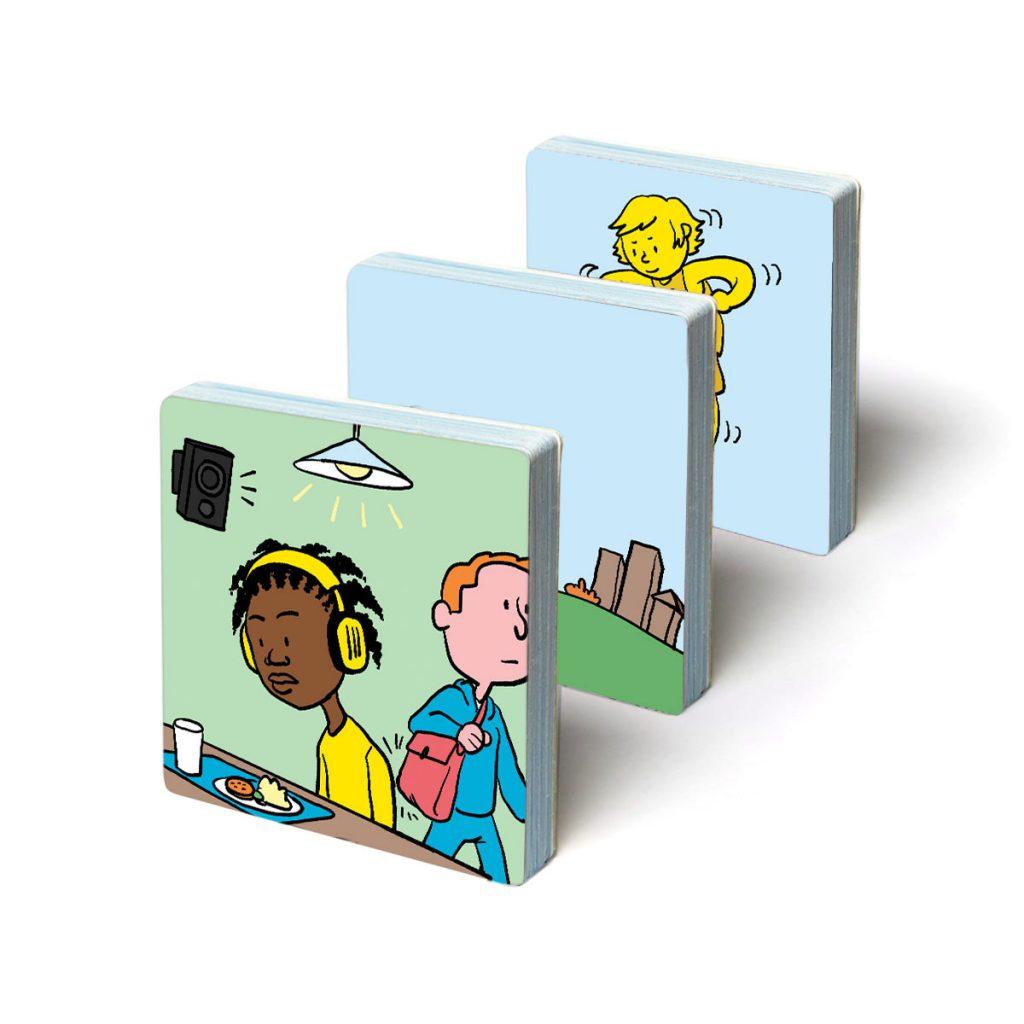
Me & My Senses
My Senses 1
Proprioception and Interoception.
My Senses 2
Vestibular.
My Senses 3
Touch, Taste, Smell, Vision, Auditory.



